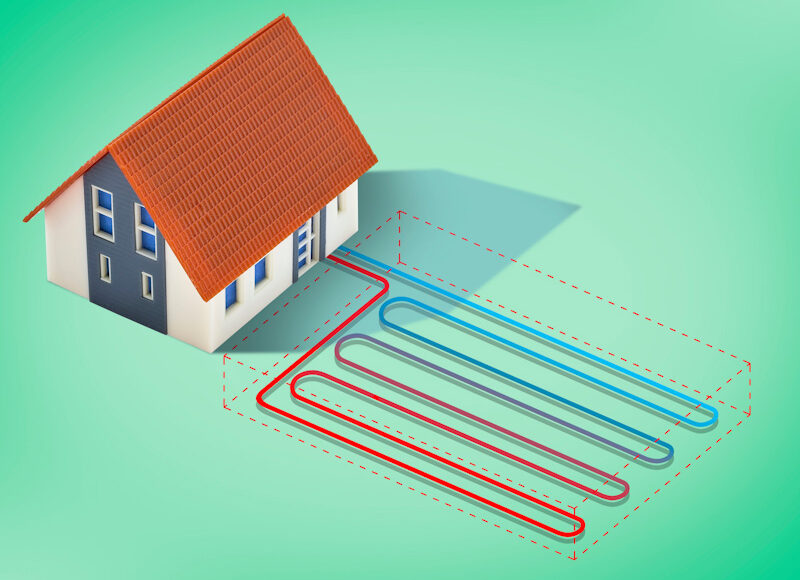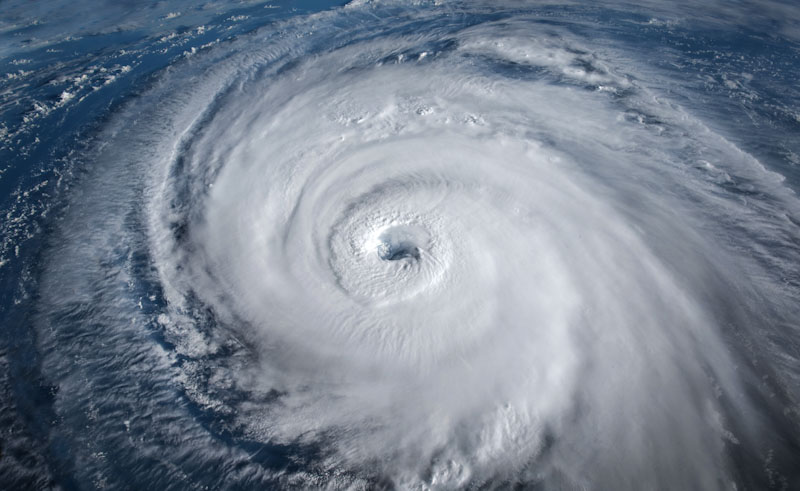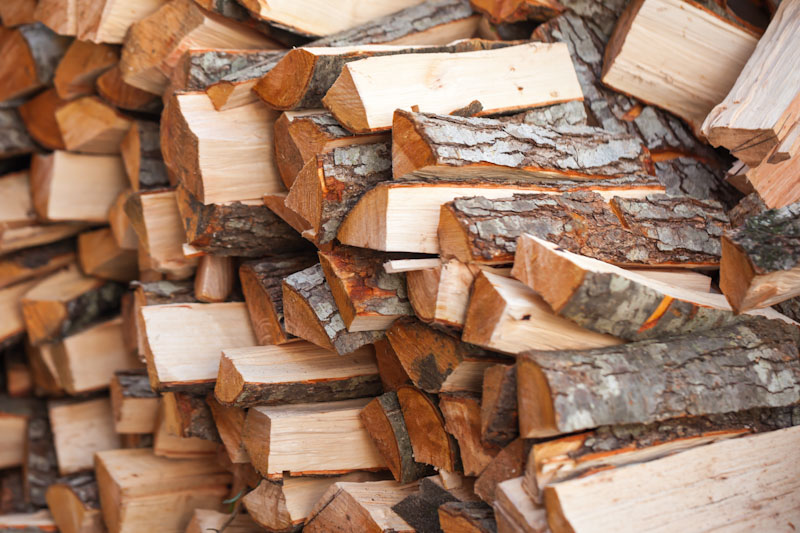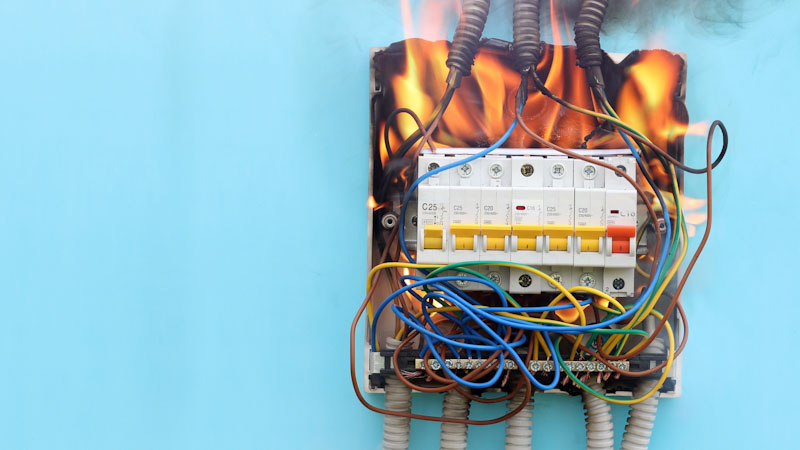With energy costs going up all the time, it is becoming a bigger and bigger challenge to heat and cool our homes. This is a problem for just about everyone; but especially for those who live in the warmer parts of the country. Trying to cool a home can be more expensive than trying to heat it, as air conditioners are notorious for their electrical consumption.
For many of us, heating isn’t as much of an issue, because we’ve installed wood-burning stoves in our homes. Considering that we can find wood for free, if we’re willing to put a little work into chopping and splitting it, we can save a lot on our heating bills, even if we can’t cut them out completely.
But the same hasn’t really existed for cooling… or has it? Has the answer we need been literally under our feet, without our even knowing it? Is there some way that we can tap into the ground temperature and use it to cool our homes? The answer is yes, although I’ll warn you, it’s a fair amount of work. Ultimately, it’s worth the effort, because of what it will cost you.
The basic idea is to tap into the already existing underground temperature. Anyone who has a well knows that the water coming out of that well is nice and cool. You can even garner the same understanding by the temperature of your tap water. Even on the hottest of days, water that travels underground to your home is nice and cool.
Tapping into this underground temperature is called “geothermal.” There is both geothermal heating and cooling. Heating requires an engineer, with wells that run hundreds of feet into the ground. Cooling is much simpler and really doesn’t require the services of an engineer. You can put a system in yourself, with little design work and even less technical knowledge.
Underground temperatures vary from place to place, but they tend to stay consistent throughout the year. From what I can gather, it appears that about 55°F is the most common underground temperature, although it is possible for underground temperatures to be as high as 75°F. (Please note here that I am not talking about areas where there are underground hot springs or where volcanic activity might be present.) But even 75°F isn’t all that bad, as it is right in the middle of what is called the “comfort zone” for home heating and cooling.
The Basic Geothermal Cooling System
A basic geothermal cooling system consists of pipe or tubing that’s buried underground, with air passing through it. A more complicated system could run water through that tubing, then use a heat exchanger to cool air from that cooled water. The only problem with that, is that it would both cost considerably more and be a lot more work to build.
The system I’m referring to consists of corrugated plastic hose, made for use underground. It needs to be a minimum of four inches in diameter, but can be as much as six inches. It’s essential that it is not perforated. The perforated type is used for leech fields on septic systems, not for what we’re trying to do. One hundred feet of such hose should cost somewhere between $100 and $150, depending on the material, manufacturing and supplier.
One hundred feet of hose will provide the approximate equivalent of 2,000 BTUs of air conditioning. That’s actually not enough to provide full cooling for a room, as you need 5,000 BTUs to cool a 10 x 10 to 12 x 12 room. A few other basic size requirements to help you figure out your own system:
- 2,000 BTU is enough for 50 sq. ft.
- 5,000 BTU is enough for 100 to 150 sq. ft.
- 6,000 BTU is enough for 150 to 250 sq. ft. (12 x 20 room)
- 7,000 BTU is enough for 250 to 300 sq. ft. (16 x 16 room)
It is possible to receive 5,000 BTU of cooling by using 250 feet of 4” diameter buried hose. The problem there, is that as the hose gets longer, the more power is required to push the air through it. To keep the cost and work involved in making the system down, it would be better to use two – 100-foot sections of plastic pipe, running in parallel, than to use one 200-foot section of pipe.
The other big reason to limit yourself to 100-foot sections, is that it is easy to find the hose for sale in 100-foot sections. In order to get a 200-foot-long tube, you’d have to tape two 100-foot sections together. That introduces the opportunity for water leaks, which can ultimately block the airflow through the system.
Installing the Geothermal Cooling System
To get the temperature you desire on a consistent basis requires going at least six feet under the surface. While it is possible to get cool temperatures closer to the surface than that, you can be sure that you will receive the temperature that you desire, nor that it will be consistent. That means a lot of digging, preferably with something like a track-hoe, rather than by hand. The path does not need to be straight or any particular shape for that matter. You just want to be sure that the hose doesn’t cross itself or lay beside itself.
Before digging, you’ll want to plan out where your trench should go. A simple loop or S works well, as long as there is nothing in the way. Be sure to call 8-1-1 before digging, to find out if there are any underground pipes or wires going across your property. They will be glad to come out and mark the location of any, so that you don’t dig them up.
You’ll also need to watch out for tree roots, if you have trees on your property. By and large, the roots will extend underground, just as far as the branches extend above the ground. Plan your trench so that it doesn’t go anywhere that roots are. Digging through those roots will be much more difficult.
You’ll want to go underground as quickly as possible, once you go through your home’s wall. Any part of the hose that is exposed above ground should be thoroughly insulated (spray foam insulation, encapsulated in a plywood cover box, works well) to keep it the air inside from heating up as it passes from the ground to your home.
A blower should be installed at the input end of the hose, where it is drawing air out of your home. For this, a 4” diameter squirrel cage blower can be used or a 4” diameter inline duct fan. A circular or box fan should be added at the output end, where the cooled air returns to your home. These two should be as far apart as practical, perhaps on opposite ends of the room. Both will need power, so that’s a consideration when laying them out. At the same time, you don’t want to put them directly under your electrical outlets and take the risk of cutting a wire.
Heat rises and cold air drops, so it might seem that the most logical place to pull the air from, to go through the underground hose, is near the ceiling. There are a couple of problems with that though. First, there’s the problem of aesthetics. Installing a squirrel cage on the wall, up near the ceiling, isn’t going to look very good. Secondly, the extra hose or ductwork outside the home just gives more time for the air to heat up, making the system less efficient.
Because of these reasons, you’re better off putting both the air outlet and air inlet near the floor, possibly even hidden by furniture. Just make sure that they are not so hidden, that the air can flow to and from them easily.
Adding a ceiling fan to the room, if one isn’t already installed, can help with overcoming the tendency for hot air to rise and cold air to drop to the floor. The ceiling fan will work to mix the air around, eliminating the stratification of air temperature. It will all be pretty much the same temperature.
You may decide that you want to install a thermostat for your geothermal cooling system. Any standard thermostat will work; but it will be necessary to run the control output of the thermostat through a relay, connecting the blower and motor to the other side. Thermostats aren’t built to handle the amount of current needed for running a motor. Relays are used in HVAC systems, accepting the low current, low voltage, signal from the thermostat and using it to allow higher current, higher voltage power to drive the blower and other parts of your HVAC system. Some of those need 220-volt AC current, while others run on normal house current. The other thing to consider is creating insulated plugs, perhaps out of foam rubber, which can be installed in the input and output ends of the geothermal cooling system during the winter, when the system is not in use. Even without any power, the system will allow some amount of cold air into the home, during those colder months, if the hose is not plugged.











Ian Whyte | July 24, 2023
|
Thats a cool system ! (Sorry..) But how do you adapt it to heating ??
Ian,
Western Australia